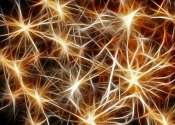Scientists combine CRISPR and DNA barcoding to track cancer growth
Stanford scientists have found a way to modify pairs of cancer-related genes in the lungs of mice and then precisely track individual cells of the resulting tumor – a combined technique that could dramatically speed up ...
Apr 3, 2018
2
258









